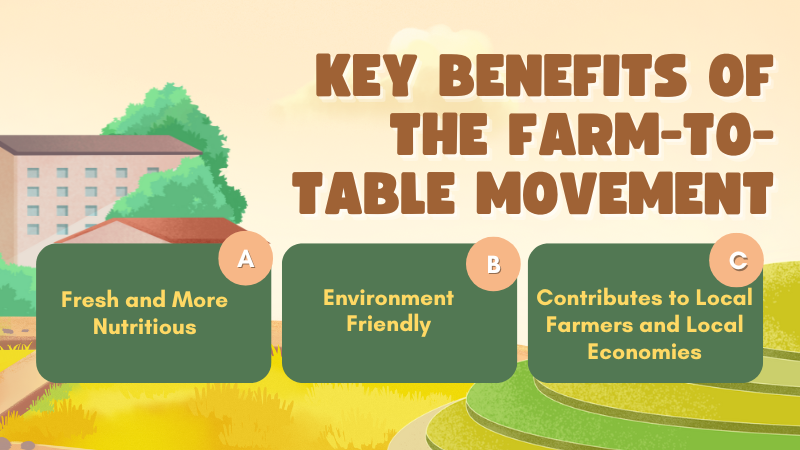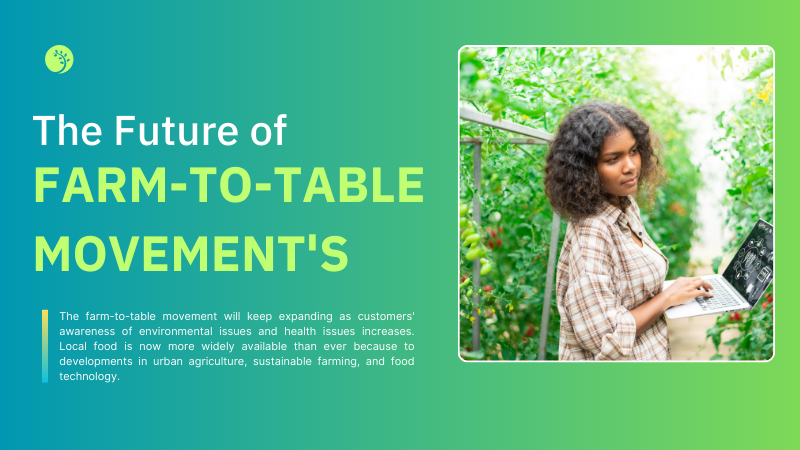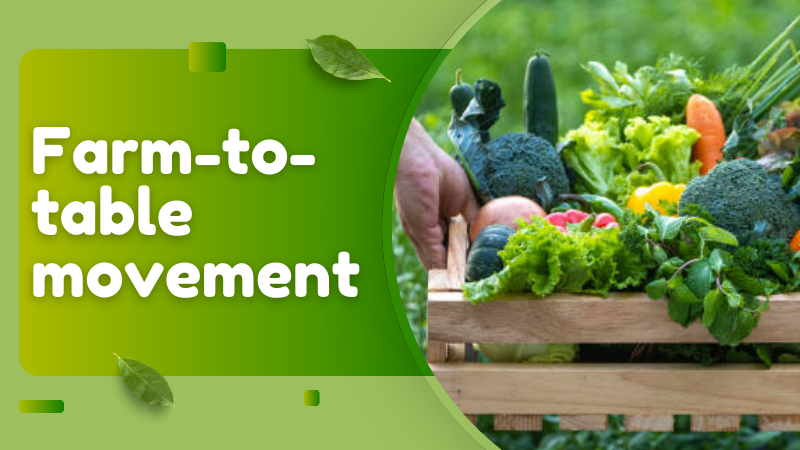It all has created so much enthusiasm, though a basic understanding remains regarding this: What exactly is this movement termed “farm to table”?.
This revolutionizing approach toward thinking about food by people concerning an awareness of its sustainability, health benefits, and local, is done nowadays because fresh food consumption can easily be maintained for this kind of ingredients by getting support from nearby farmers.
What Is the Farm-to-Table Movement?
By encouraging direct food procurement from nearby farmers to consumers, the farm-to-table movement lessens dependency on industrial food supply networks. This approach ensures that the food is fresh, healthy and durable. Unlike traditional food distribution, which include several mediators, form-to-table practices prefer minimal processing and transportation, enjoying consumers rich in nutrients with low guardians.
The History and Rise in Popularity
Although eating local, fresh food is not a novel concept, the farm-to-table movement gained popularity in the US during the 1960s and 1970s.
It was influenced by concerns about processed foods, industrial farming practices, and environmental stability. Influential chefs, such as the founder of Chez Panisse in California, made this approach champion, which stressed organic, local citrus ingredients.
Over the years, the movement has increased in a global tendency. Consumers have become more conscious of their food options, and restaurants, grocery stores, and farmers’ markets have adopted farm-to-table.
Today, the farm-to-table is not just a tendency, but a lifestyle hugged equally by advocates of enthusiasm and stability towards food.
Key Benefits of the Farm-to-Table Movement

1. Fresh and More Nutritious
Since local food can be farmed and gathered instantly, it spends less time in the freezer compartments, thus, preserving nutritional value. However, fruits and vegetables harvested at supposed peak ripeness exhibit higher flavor, vitamins, and minerals than those sourced later, except for imported goods that have almost lost their taste.
2. Contributes to Local Farmers and Local Economies
If clients choose farm-to-table dining, they will endorse local farmers and smaller producers. In this way, the economy is boosted for the family farms, creating jobs, and bringing rural communities together.
3. Environment Friendly
By reducing the length of food travel, emissions of carbon are reduced and there is less dependency on packaging, refrigeration, and preservatives, reducing the environmental impact overall.
4. Encourages Eating in Season
Farm and table promote eating in season, which allows consumers to receive the freshest ingredients while maintaining the natural cycles of agriculture. Eating with the seasons also diversifies diets, providing different nutrients at different times of the year.
5. Ensure Food Transparency
Food farms and table provides better assurance of the source and ways of production. This transparency serves to build trust among farmers, restaurants, and consumers; thus, every party and person appreciates the quality and ethical construction of foods.
How to Support the Farm-to-Table Movement

1. Buy at Farmers’ Markets
Local farmers’ markets are places where fresh seasonal produce can be procured while also helping some small-scale farmers. The markets provide a direct link between consumers and food producers.
2. Dine in Farm-to-Table Restaurants.
Currently, a lot of cafes purchase their food from nearby farms. Select restaurants that serve fresh, locally farmed food when you’re dining out.
3. Become a member of a Community Supported Agriculture Program.
The CSA is an efficient program whereby consumers pay a certain subscription amount to an existing farm and in turn, receive vegetables every month.
This is a surety for each of the two that the farmer will be financially strong, yet it is wholesome seasonal food for consumers.
4. Cultivate Your Food
Even with a small garden, like a few herbs or vegetables, starting your own home-grown produce can bring you closer to fresh food by being less dependent on what the store offers.
5. Inform yourself and others
First, getting the word out about the farm-to-table movement should make more people influence healthy eating habits. That kind of knowledge is spread through blogs, social networks, and gatherings with food or events in communities.
The Farm-to-Table Movement’s Future

The farm-to-table movement will keep expanding as customers’ awareness of environmental issues and health issues increases. Local food is now more widely available than ever because of developments in urban agriculture, sustainable farming, and food technology.
Recognizing the importance of local and durable food systems with more individuals, businesses, and policymakers, the farm-to-table movement is shaping the future of how we eat.
Whether you are a food lover, an environmental advocate, or someone is looking for fresh food, embracing farm-to-table practices can lead to permanent benefits for you and the planet.
Conclusion
The farm-to-table movement is no fad; it is an institutional reconstruction in food thinking. It is possible to improve our health, boost local economies, and make contributions to a more sustainable planet through fresh locally sourced ingredients. Whether through farmers’ markets, farm-toting restaurants, or self-grown food, every little effort makes a big difference.
So, are you ready to take the plunge into farm-to-table living? Then start today and enjoy the delicious benefits of fresh and sustainable eating!











